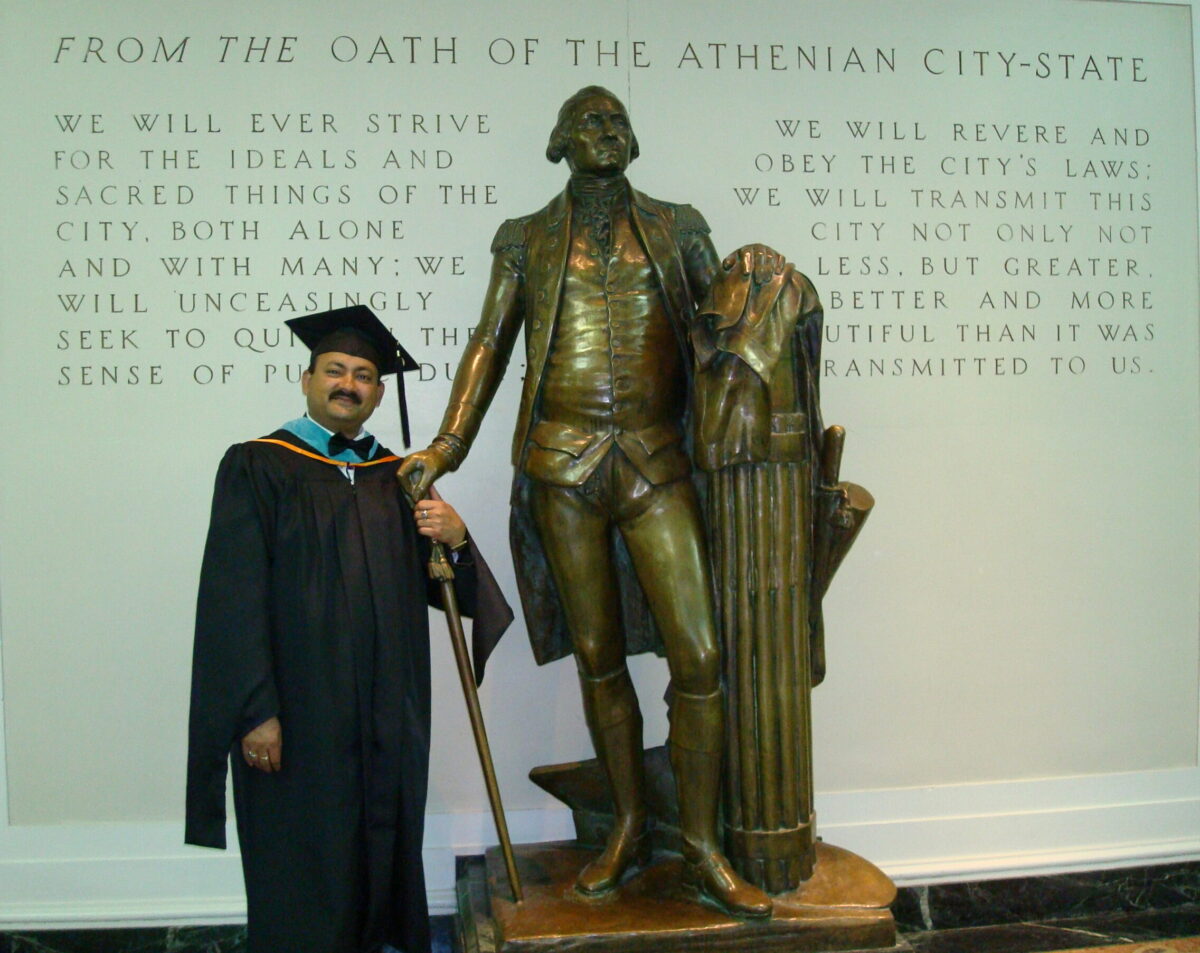Bikaner, had been successful in evoking may images in the past in my mind; the temple where rats run like devotees, the grandeur of the Junagadh Fort Palace; Lalgarh palace splendor; Gajner palace and the serenity of its lake; the sharp shooter Karni Singh, erstwhile royal of Bikaner, and a somewhat blurred image of gold work on camel leather.
I enquired and set off to search for this Usta Kaam, name I learned later, and stopped by at some small dusty, clumsy shops, where creativity was at its best in humble surroundings. The flawlessness of the work stood out in sharp contrast to the scratches on multi-purpose work cum display tables.
Behind the counter stood a thin young man carrying the burden of legacy despite its odds. He was born in the community of Usta’s, who were originally from Multan, now in Pakistan, and had migrated to Mughal Court. The then Raja of Bikaner, Rai Singh invited them to Bikaner to work on the Junagadh Fort and Anup Mahal walls and ceilings. Naqqashi, is also known as gesso painting and what the craftsmen did to the Raja’s Fort and Palace is nothing short of being miraculous. Delicate floral and animal forms in resplendent gold have left the palace still looking like a decorated bride about to be wed.
Later on, the Usta’s shifted their work to be executed on camel leather as in declining kingdoms and later Independent India there were no royal courts to patronize their work and provide sustenance. The process though appearing simple is very painstaking. First the camel hide is softened and stretched and then placed on clay moulds. To remind you of the strength of camel hide, it was used to make saddles for horseback warriors and shields in war! The mould is removed after drying it for two days in the sun. Then the craftsman draws lines of the design he is going to make on the piece. The items can be in different shapes, like wine flasks, with long or short stem as the case might be; goblets; vases; perfume containers; water-bottles; jewellery boxes, lamp shades, picture-frames; wall hangings; and mirror-frames!
Akbara, is the technique of the design process, wherein a paste of powdered bricks, animal fat, jaggery and fenugreek seeds is embossed on the surface. The coloured portions are first painted and then outlined with fine black lines. Then the glamorous green and red colours are applied on the item and finally a coat of chandras, local varnish seals the fate of the beauty!
Kamladevi Chattopadhyay elaborates the process thus, “The portion to be ornamented is raised by repeatedly applying a special preparation of shell powder, mixed with glue and a kind of wood apple. Alternatively, sand from a ground earthen pot is mixed with glue and jaggery to create the required paste. The embossed surface is then painted upon. Usually a colour called paveri is applied first. Then a colour made from sindur and rogan is applied. Rogan is prepared by mixing chandras and linseed oil. Bat is applied to area where gold is to be patched.
Mohammad Haneef Usta distinguishes between different kinds of Naqqashi:
- Golden lacquered Naqqashi, in which flowers and leaves are golden
- Golden lacquered Naqqashi with mina, in which colour is applied to flowers and leaves
- Golden lacquered Zangali, in which the work surface is emerald green and rest in different colours
- Golden lacquered Tantla, in which surface is golden while flowers and leaves are in colour, and details are in white
- Ranga Baijee in which the work surface remains white, flowers and leaves are painted in transparent colour and partly shaded
He further clarifies on motifs:
- Turanj, in which identical patterns are transcribed at the base and the top
- Chande, in which a small and intricate design is repeated all over the decorated area
- Bharat, in which the entire surface is filled with motifs and patterns leaving little visible “
The most popular patterns are called Tarabandi; star-studded sky and, Naqqashi; floral and animal patterns!
Before the families practicing and nourishing this art are forced to abandon it for want of poor network and appreciation in international markets, the society or a start-up should think of ingenious ways to reach this rare art to markets and museums of the world! It is a gift of God!
Unable to curb my urge to possess one such piece I requested Javed, an artisan to make me a wall hanging with the profile of a famous Rajasthani princess in the centre portion…like she is sitting in a chhatri and waiting for her lover with longing in her mystic eyes!
Note: All photographs have been shot in the natural environment of an artist’s workshop !











